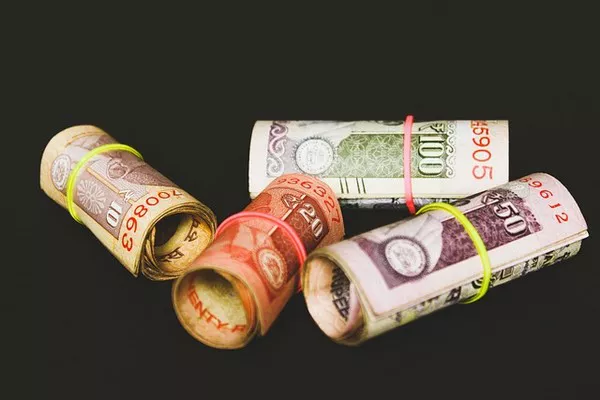The Indian Rupee (INR) stands as a testament to India’s economic and cultural richness. This article presents an exhaustive exploration of the INR, traversing INR historical roots, symbolic representation, currency codes, and diverse denominations. Understanding the nuances of the Indian Rupee unveils not just its economic significance but also provides insights into the multifaceted facets of Indian history and identity.
Indian Rupee Currency History
The journey of the Indian Rupee can be likened to a historical odyssey, dating back to ancient times. The roots of the INR can be traced to the Silver Punchmarked coins that were in circulation around the 6th century BC. As empires rose and fell, so did the forms and faces of Indian currency.
The Mughal Empire, which flourished in the 16th century, played a pivotal role in shaping the precursor to the modern Indian Rupee. The introduction of the silver Rupiya during this era laid the groundwork for a more standardized currency system. However, the subsequent colonial powers, particularly the British, left their imprint on the currency landscape.
The establishment of the Reserve Bank of India (RBI) in 1935 marked a crucial turning point. Post-independence in 1947, the RBI became the sole authority for issuing and regulating currency. The year 1957 witnessed the decimalization of the Indian Rupee, ushering in a modern era of decimal coinage.
Indian Rupee Currency Symbol
A defining moment in the modern history of the INR was the adoption of its official symbol – ₹. On July 15, 2010, the Government of India unveiled this symbol, signifying the culmination of a nationwide competition to create an emblematic representation of the currency. The symbol is a fusion of the Devanagari script’s “र” (ra) and the Latin script’s “R,” encapsulating the essence of the Indian Rupee’s sonic identity.
The introduction of a symbol was not merely cosmetic; it bestowed upon the INR a visual identity akin to other major global currencies. It also aimed to foster a sense of pride and recognition, domestically and internationally, for the Indian Rupee.
Indian Rupee Currency Codes
In the realm of international finance, the Indian Rupee is identified by the three-letter code INR, adhering to the standards set by the International Organization for Standardization (ISO). This code is vital for seamless international transactions, fostering clarity and uniformity in the global financial system.
Accompanying the ISO code is the numeric code 356, another component of the ISO 4217 standard. This numeric code streamlines computerized systems, facilitating the processing of transactions involving the INR. The adherence to these international standards positions the Indian Rupee as a recognizable and interoperable currency on the global stage.
Indian Rupee Denominations
The Indian Rupee’s versatility is showcased through its diverse range of denominations, catering to the myriad needs of its populace. From coins of modest value to high-value banknotes, each denomination serves a unique purpose in India’s complex economic tapestry.
Coins:
One Rupee Coin (₹1): The smallest denomination, often used for day-to-day transactions.
Two Rupees Coin (₹2): Slightly larger in size, providing a nominal increase in value.
Five Rupees Coin (₹5): Featuring different designs, these coins are commonly used.
Banknotes:
Ten Rupees Note (₹10): A staple for small transactions, easily accessible to the masses.
Twenty Rupees Note (₹20): Infused with enhanced security features, this note balances usability and security.
Fifty Rupees Note (₹50): Widely accepted for mid-range transactions, contributing to the liquidity of the economy.
One Hundred Rupees Note (₹100): A commonly used denomination, symbolizing the backbone of daily commerce.
Two Hundred Rupees Note (₹200): A relatively recent addition, filling the gap between lower and higher denominations.
Five Hundred Rupees Note (₹500): A higher denomination catering to significant transactions, reflecting the economy’s scale.
Two Thousand Rupees Note (₹2000): The highest denomination in circulation, introduced to accommodate larger transactions.
The strategic selection of denominations ensures that the INR seamlessly facilitates transactions across a spectrum of economic activities.
Conclusion
In conclusion, the Indian Rupee stands as an emblem of India’s economic resilience and cultural heritage. Its historical trajectory, marked by diverse influences, culminated in a modern currency system that reflects the country’s complexity. The adoption of a symbol and adherence to international standards have elevated the INR’s status on the global stage.
As India continues to evolve as a major player in the international economic arena, the Indian Rupee remains a symbol of its growth and potential. A nuanced understanding of the INR, encompassing its history, symbol, codes, and denominations, provides a comprehensive perspective on the economic journey of a nation with a rich tapestry of traditions and aspirations.


